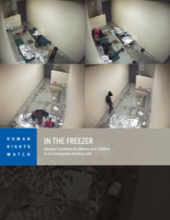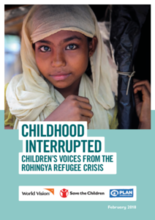Displaying 261 - 270 of 516
This report examines US authorities’ compliance with the specific protections that should be afforded to children, drawing on 110 interviews with children themselves or women detained with their children.
Este informe examina el cumplimiento por parte de las autoridades estadounidenses de las protecciones específicas que deben otorgarse a los niños, basándose en 110 entrevistas a niños y mujeres detenidas con sus hijos.
Through the case of a young Sri Lankan woman who arrived in Denmark as an ‘unaccompanied asylum-seeking minor’ and spent five years within the Danish asylum system, this article explores how she experienced moving through different legal categories and the institutional settings associated with them.
This paper presents findings from two studies, in England (2012) and Ireland (2013), which explored experiences of unaccompanied refugee minors (URM) in foster care.
This report presents the results of a consultation - organised by Plan International, Save the Children and World Vision International - which surveyed children in Cox’s Bazar, Bangladesh from refugee communities (who identify themselves as Rohingya) and children from host communities.
The present research aimed to describe and compare three new second-level intervention models to improve the care of unaccompanied migrant minors in Italy.
Based on primary and secondary source materials, this article traces the evolution of the US social work field's response to the needs of unaccompanied immigrant and refugee youth during the past two centuries.
This report from the Child Protection Area of Responsibility (CP AoR) highlights the child protection needs and responses in Syria and includes objectives and targets for continued child protection interventions and strategies.
This paper presents a community based participatory research project, which adopted a photovoice approach with seven unaccompanied asylum-seeking children (UASC) living in foster care in the United Kingdom.
In this call to action, UNICEF, UNHCR, IOM, Eurostat and OECD show how crucial data are to understanding the patterns of global migration and developing policies to support vulnerable groups like children.





